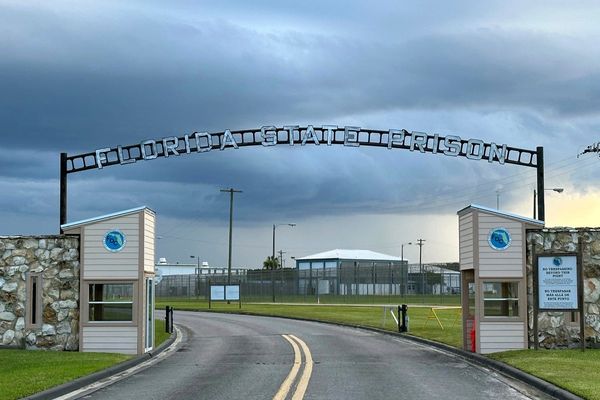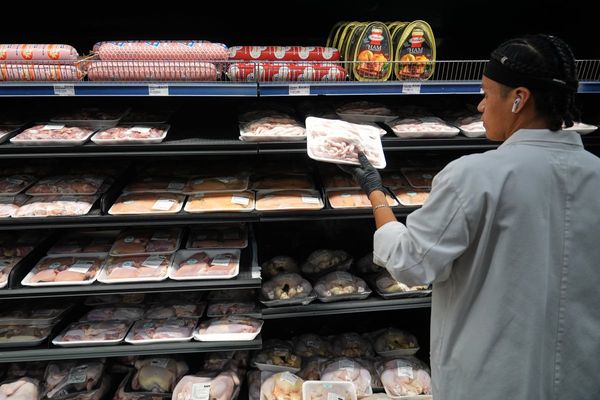
Soon after I had some hands-on time with the new iPhone 17 Pro and 17 Pro Max, I really thought more about the new 48MP telephoto camera that adorns both models. On paper, it sounds like a substantial upgrade and exactly what the latest iPhones need to be a solid best phone contender — especially considering how the previous iPhone 16 Pros came with a mere 12MP sensor for their zoom lens.
However, the other notable change to the zoom lens involves the length of the optical zoom. Instead of a 5x optical zoom lens like on the iPhone 16 Pro models last year, Apple switched to a 4x optical one for the iPhone 17 Pro. As I’ve detailed in my iPhone 17 Pro telephoto camera explainer, it’s the classic trade-off between the sensor resolution and optical magnification.
Just how big a trade-off is exactly what I want to answer with real zoom photos taken from both the iPhone 17 Pro and 17 Pro Max. For this test, I’m also including photo samples taken with other best camera phone contenders — like the Galaxy S25 Ultra, Pixel 10 Pro XL, and yes, even last year’s iPhone 16 Pro Max.
iPhone 17 Pro vs iPhone 16 Pro Max
The first thing I want to do is answer this pressing question: is the iPhone 17 Pro / 17 Pro Max telephoto camera better than what was available on the previous model? At 4x zoom, it’s hard to discern any major differences with the side-by-side shots above. In fact, they almost look identical — until I zoom in toward the middle with the knot on the tree.
Since the iPhone 16 Pro Max is leaning on a bit of sensor cropping with its 48MP main camera to capture the shot at 4x zoom, the textures and edges of the tree’s bark and branches are softer and less defined. Just remember, it's not using the telephoto camera at 4x zoom.
Moving onto 8x zoom, things get a bit interesting because it’s now the iPhone 17 Pro that’s using sensor cropping to achieve what Apple claims to be 8x zoom at "optical-quality" with its 48MP telephoto camera.
What’s happening in this process is that the 4x optical zoom lens magnifies the image it’s seeing to the 48MP sensor, which then performs a 2x sensor crop to get to 8x zoom. The end result is a 12MP snapshot at 8x zoom.
In contrast, the 5x optical zoom lens of the iPhone 16 Pro Max’s 12MP camera is already closer to the image, which then applies a digital zoom on that to get to 8x zoom.
This time, the results are a lot closer to one another. Most people might not see any differences, but inspecting parts of the tree reveals slightly more definition with the iPhone 16 Pro Max — it also seems to have a bit more contrast.
And finally, the 25x zoom shots of that knot in the tree again reveal similar results. However, looking at the details very closely, I can make out that the wooden textures are ever slightly sharper.
I’m not surprised with the results at 40x zoom because the iPhone 16 Pro Max has a better starting position at 5x zoom that preserves more of the detail, and requires less digital zoom and processing to get to 40x.
While the iPhone 17 Pro / 17 Pro Max have a higher resolution sensor, it has a father starting point at 4x optical zoom — and then requires way more digital zoom to get to 40x. Not only is the end result softer, but it also suffers from more artifacting due to the processing of the image zoom with all of that digital zoom.
From what I’ve experienced, the iPhone 17 Pro / 17 Pro Max beats the iPhone 16 Pro / 16 Pro Max at 4x zoom. I’d even go far to say that the new phones match their predecessors at 8x zoom, just like what Apple implies with "optical-quality" performance. Anything beyond that, though, and the iPhone 17 Pros just won’t beat the iPhone 16 Pros, even though the iPhone 17 Pro Max can go up to 40x zoom.
iPhone 17 Pro / 17 Pro Max vs Galaxy S25 Ultra


The Galaxy S25 Ultra has remained the best camera phone around for most of the year, and that doesn’t appear to change even with the arrival of the iPhone 17 Pros. Rather than just having one telephoto camera, the Galaxy S25 Ultra has two — a 10MP telephoto with 3x optical zoom and a 50MP telephoto with 5x optical zoom.
Since I’m focusing on the iPhone 17 Pro’s telephoto camera, the first shot I ended up capturing is 4x zoom. I pointed both cameras at a wooden fence and there’s no comparison: the iPhone 17 Pro’s 48MP telephoto camera paired with its 4x optical zoom captures the stronger details upon closer inspection. It does a much better job at retaining the wood grain and textures of the fence, whereas they’re softer and fuzzier in the Galaxy S25 Ultra shot.


Switching over to 8x zoom, the Galaxy S25 Ultra now properly switches to its 50MP telephoto with 5x optical zoom and the results easily beat out the iPhone 17 Pro. The textures of the wooden fence are much more pronounced with the S25 Ultra.


Finally, the Galaxy S25 Ultra easily gets the win at 40x zoom because the wooden grain pattern now appears fainter, more indistinct with the iPhone — whereas the Galaxy S25 Ultra’s beefier 50MP sensor paired with its 5x optical zoom captures all of those details.
I’m not the only one who notices the Galaxy S25 Ultra’s superior zoom performance, seeing that my colleague Mark Spoonauer recognizes this with his test of the iPhone 17 Pro Max. Notice how at 10x zoom the iPhone 17 Pro Max begins to lose some definition all around the statue, especially around the face — and the color temperature is way too warm. The Galaxy S25 Ultra easily wins here.
Then at 40x zoom, we can see more of this disparity with the iPhone 17 Pro Max’s shot lacking the definition of the Galaxy S25 Ultra’s capture.
The last zoom shot I want to share between the iPhone 17 Pro Max and Galaxy S25 Ultra is the one above with the West 41st sign at 40x zoom. They’re clearly legible, but the Galaxy S25 Ultra’s shot is still sharper and retains more of the detail with the pole.
iPhone 17 Pro vs Pixel 10 Pro XL


While the Galaxy S25 Ultra is a zoom pro, I’ve been more enamored by the Pixel 10 Pro and 10 Pro XL’s AI magic at enhancing zoom photos beyond 10x with the help of Google's Pro Res Zoom feature. It also helps that the Pixel 10 Pro models pack a 48MP telephoto with 5x optical zoom, which seems to have the edge over the iPhone 17 Pro / 17 Pro Max, at least on paper.
Starting with the 4x zoom photo of the building above, the iPhone’s shot looks warmer and more evenly exposed. When I look closer at the brick work, it’s clear the iPhone 17 Pro captures more detail and definition, due to the fact that the Pixel 10 Pro XL is using its 48MP main camera and cropping to achieve 4x zoom.


It’s more of a tie with these 8x zoom snapshots, as both phones now lean on their dedicated telephoto cameras. Surprisingly, though, the iPhone 17 Pro holds up nicely against the Pixel 10 Pro XL by capturing the same level of detail.


But at 40x, Pro Res Zoom kicks in to clear up and sharpen the Pixel 10 Pro XL’s image — giving the bricks clearer edges and definition.
My 40x zoom photos of the Chrysler Building above shot from Bryant Park illustrates the effectiveness of Pro Res Zoom at cleaning up the photo. The iPhone’s image looks nice, but the Pixel 10 Pro XL’s photo is better.


The last thing I want to show between the iPhone 17 Pro and Pixel 10 Pro XL is the zoom shot of the pink flower above. I was about 10 to 13 feet away from it, but Pro Res Zoom again works its magic to show more of the petal’s details.
The results go either way at 4x and 8x zoom, but the AI-enhanced photos at 40x zoom prove the Pixel 10 Pro XL is better. Then again, it raises a question about the authenticity of the photo when it’s being tweaked with AI.
Bottom line

One thing I’ve learned with photography is that I would much rather have a lower resolution sensor paired with a longer range optical zoom lens, versus the opposite. Apple’s just the latest company to follow this trend of fashioning a larger resolution sensor with a shorter optical zoom, and the results aren’t surprising to me.
Like I said earlier, this trade-off helps the iPhone 17 Pro and 17 Pro Max to deliver superior shots at 4x zoom — and to an extent — matches the iPhone 16 Pro Max at 8x zoom. But there’s a limit to the effectiveness of digital zooming and sensor cropping, which is amplified at 40x zoom. Against its rivals, it’s obvious that the new iPhones at a disadvantage at anything beyond 10x zoom in my experience. But the iPhone 17 Pro zoom lens does a superb job at 4x and 8x zoom.
Follow Tom's Guide on Google News and add us as a preferred source to get our up-to-date news, analysis, and reviews in your feeds. Make sure to click the Follow button!







